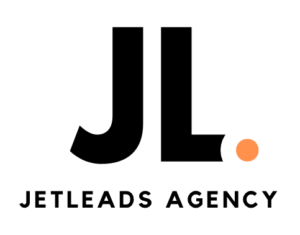Search engines have come a long way from simply matching keywords to web pages. In 2025, visibility is no longer just about content and backlinks—technical SEO has become the foundation that supports all other optimisation efforts. Without a solid technical structure, even the best content can go unseen.
At Jet Leads Agency, technical SEO is treated as a core element of long-term digital success. Whether you’re a business owner trying to improve lead generation, a developer ensuring proper infrastructure, or an SEO professional auditing performance, understanding how technical SEO influences your site’s search visibility is no longer optional—it’s essential.
What is Technical SEO?
Technical SEO refers to optimising a website’s infrastructure so that search engines can efficiently crawl, render, index, and rank pages. It includes everything from site speed and indexability to mobile responsiveness, schema markup, and secure connections.
In other words, technical SEO is what ensures that your content can actually be found and understood by Google’s bots. Think of it as laying the groundwork that enables your site to perform at its best both for users and for search engines.
Why a Technical SEO Audit Matters More in 2025
Search algorithms have become increasingly sophisticated. Google’s recent updates prioritise user experience metrics, mobile-first indexing, and intelligent rendering systems. A technical SEO audit uncovers problems that block visibility—like slow load times, crawl errors, poor Core Web Vitals scores, or excessive redirect chains.
An audit provides a detailed evaluation of your site’s performance across key technical factors, allowing you to prioritise improvements that directly affect visibility, rankings, and user retention.
Key Areas Where Technical SEO Impacts Visibility
1. Site Speed: The Speed of Success
In 2025, speed remains a critical ranking factor. Google rewards websites that deliver a fast, frictionless experience. If your pages take more than a couple of seconds to load, users will bounce—and Google will take note.
Page speed directly affects:
- Bounce rate
- Session duration
- Conversion rate
- Organic search rankings
The solution? Compress images, enable caching, minify JavaScript, and choose a fast, reliable hosting provider. Tools like PageSpeed Insights and Lighthouse can help pinpoint slow-loading elements, but a full technical SEO audit will give you a broader performance overview.
2. Indexability: Ensuring Your Pages Are Discoverable
Even if your content is fantastic, it’s worthless if it isn’t indexed. Indexability determines whether search engines can find and store your content in their database. If a page isn’t indexed, it will not appear in search results.
Key factors influencing indexability:
- Robots.txt configurations
- Noindex meta tags
- Canonical tags
- Crawl depth and internal linking
Regularly auditing your index coverage via Google Search Console and through a crawler tool ensures you catch pages that are blocked or ignored. A surprising number of businesses lose traffic due to accidentally deindexed pages or misconfigured directives.
For in-depth help, visit Jet Leads Agency’s dedicated page on technical SEO services to learn how experts resolve visibility issues caused by poor indexation.
3. Core Web Vitals: UX Metrics That Influence Rankings
Google’s Core Web Vitals—Largest Contentful Paint (LCP), First Input Delay (FID), and Cumulative Layout Shift (CLS)—are no longer optional in 2025. These metrics measure how fast your page loads, how quickly it becomes interactive, and how stable it is during loading.
Failing to meet Core Web Vitals thresholds can negatively impact both rankings and user trust. Optimising for Core Web Vitals involves:
- Lazy loading images
- Reducing third-party scripts
- Ensuring visual stability
- Minimising main-thread work
These optimisations improve more than rankings—they deliver a smoother experience that keeps users engaged and encourages conversions.
4. Crawl Budget: Making the Most of Google’s Attention
Every site has a crawl budget, or the number of pages Googlebot is willing to crawl during a given timeframe. Large websites with bloated structures, duplicate content, or outdated pages can waste crawl budget, preventing important pages from being discovered.
Improving crawl efficiency includes:
- Removing unnecessary pages
- Fixing broken links
- Improving internal linking
- Submitting accurate XML sitemaps
A thorough technical audit will identify which parts of your site are hindering crawlability and help prioritise fixes so you make better use of your crawl budget.
2025 Trends in Technical SEO
Mobile-First Becomes Mobile-Only
Google has officially shifted its crawling to mobile-first indexing across all websites. That means your mobile version is the version Google sees first. Sites with poor mobile layouts, hidden content, or usability issues will see diminished rankings.
AI and SEO Automation
Search engines are using AI to better understand site architecture, entity relationships, and content quality. Structured data and schema markup are now essential tools, allowing AI systems to extract more meaningful signals from your site.
Server-Side Rendering (SSR) for JS-Heavy Sites
With more websites built on JavaScript frameworks like React or Angular, server-side rendering has become a best practice. SSR allows content to be rendered before it reaches the browser—ensuring bots can crawl and index everything effectively.
How to Perform a Technical SEO Audit in 2025
A modern technical SEO audit involves evaluating dozens of metrics across your website’s infrastructure. The goal is to identify technical roadblocks and create an action plan for improvement.
A high-quality audit should include:
- Site crawl report (404s, redirect loops, duplicate content)
- Speed & Core Web Vitals analysis
- Mobile usability assessment
- Indexation status and coverage reports
- Internal linking and crawl depth checks
- Schema markup validation
- Security (HTTPS), canonicalisation, and site structure review
While tools like Screaming Frog, Ahrefs, or Sitebulb can assist, a manual review by professionals adds real strategic value.
If you’re unsure where to start, reaching out for a technical consultation can fast-track your progress and give you a clear roadmap for SEO success.
Common Technical SEO Mistakes to Avoid
- Blocking important resources in robots.txt
- Using “noindex” tags on key landing pages
- Allowing duplicate versions of the same content (HTTP vs HTTPS, trailing slash issues)
- Neglecting broken internal links
- Failing to update sitemaps after site changes
These seemingly small issues can significantly reduce organic visibility and should be addressed regularly.
How Technical SEO Supports Other SEO Efforts
Technical SEO doesn’t work in isolation—it supports every other aspect of search engine optimisation:
- Content SEO: Technical enhancements help your content get indexed and ranked properly.
- Link Building: Ensuring fast loading times and a solid structure increases the likelihood that others will link to your pages.
- Local SEO: Schema markup and mobile usability play critical roles in local rankings and map pack visibility.
A well-structured, crawlable, and fast-loading site creates the ideal foundation for all other SEO efforts to succeed.
Frequently Asked Questions (FAQ)
What is a technical SEO audit?
A technical SEO audit is a detailed analysis of your website’s backend structure and setup. It identifies technical barriers that may prevent search engines from crawling, indexing, or ranking your site efficiently.
How often should I perform a technical SEO audit?
At a minimum, a full audit should be performed once or twice per year. However, after major site changes or algorithm updates, it’s advisable to conduct one immediately.
Can technical SEO affect my rankings even if my content is great?
Absolutely. Without proper indexing, speed, or crawlability, your great content might never reach your audience. Technical SEO ensures your content can actually be found and understood by search engines.
How long does it take to fix technical SEO issues?
It depends on the issue. Simple fixes (like correcting a meta tag) can be immediate, while larger tasks (such as server-side rendering or improving Core Web Vitals) may take weeks or longer.
Does Google penalise sites with poor technical SEO?
Google doesn’t issue manual penalties for poor technical SEO, but your rankings will naturally suffer if your site is slow, hard to crawl, or lacks indexable content.


